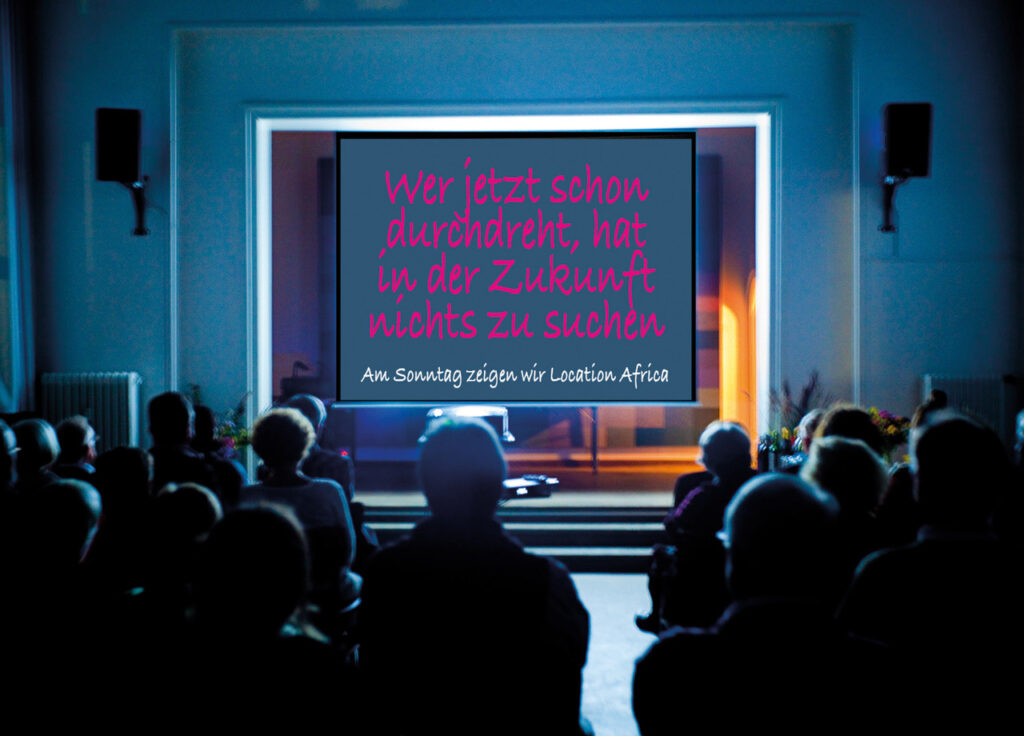
OCTOBER + NOVEMBER 2021
EXHIBITION / CINEMA / FILM / TALKS
THE NEW GERMAN FILM IN THE GALLERY
Carzaniga Gallery at Gemsberg 10, Basel.
Thursday, October 28, 2021. vernissage from 2 – 8 pm.
The New German Film and Landscapes. Photographs by Beat Presser. Exhibition from October 28, 2021 to January 8, 2022.
THE NEW GERMAN FILM IN THE MUSEUM
Rappaz Museum, Klingental 11, Basel.
Saturday, October 30, 2021. 7 p.m.
Film: Cinema and Film in times of a Pandemic by Beat Presser and the artist Danit. A film about the importance of cinema with Volker Schlöndorff, Joachim von Vietinghoff and others.
Discussion afterwards with the filmmakers Beat Presser and Danit. Topic:
Wer jetzt schon durchdreht, hat in der Zukunft nichts zu suchen. Moderated by theater and opera director Stephan Müller.
THE NEW GERMAN FILM IN THE MUSEUM
Rappaz Museum, Klingental 11, Basel.
Sunday, October 31, 2021. 3 p.m.
Film: Location Africa – In his film essay (1987) Steff Gruber reports on the extremely difficult shooting of Werner Herzog‘s film Cobra Verde. Discussion afterwards with Steff Gruber, Beat Presser and surprise guest, about the adventurous time with Werner Herzog and Klaus Kinski in Ghana, Brazil and Colombia. Moderated by Danit.
THE NEW GERMAN FILM IN THE CINEMA
Stadtkino Basel, Klostergasse 5, Basel.
Film: Fitzcarraldo by Werner Herzog with Claudia Cardinale and Klaus Kinski.
Talk: The New German Film – how it all began.
With costume designer Gisela Storch and Beat Presser. Moderated by Till Brockmann.
Homage to the New German Cinema at the Stadtkino – Guests of the Stadtkino:
November 4 – Ulrike Ottinger (director).
November 8 – Joachim von Vietinghoff (producer)
November 13 – Volker Schlöndorff (director)
November 17 – Harry Baer (actor)
A photographic portrait of the various movie theatres of Berlin during the first Lockdown 2020. Swiss photographer Beat Presser and sculptor Danit invite you to a journey to the film metropolis.
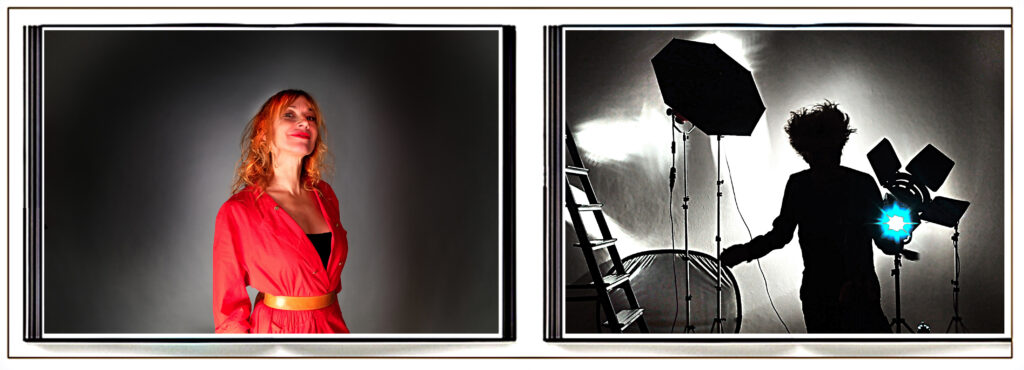
Scene 01. The idea. The photographer and the sculptor.
A photo studio in Berlin. The photographer reads a book about the first moving picture show by the brothers Max and Eugen Skladanowsky in the Wintergarten on Friedrichstrasse on November 1st, 1895 in Berlin. That very moment a colorfully dressed sculptor with wild red hair bursts into the room.
“Let us portray all movie theatres of Berlin! We should capture this moment in time and in cinema history; because it is an extraordinary and unique situation. Everything is closed and nobody dares to leave their house. Say, do you have a bicycle?”
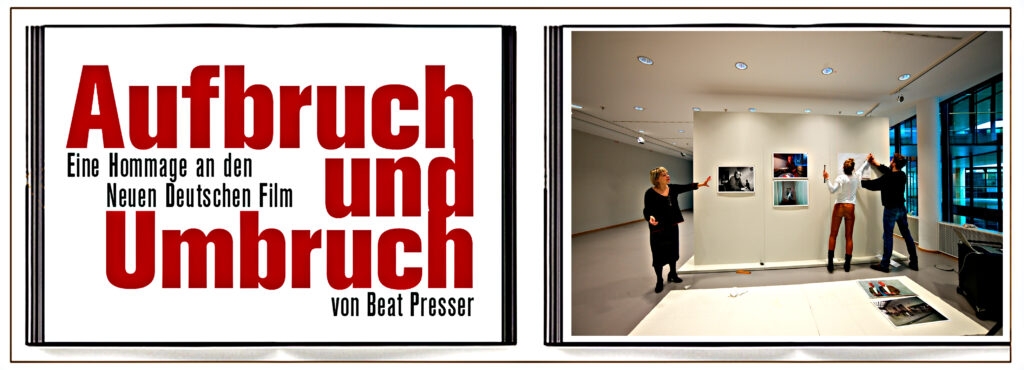
Scene 02. What happened before.
Summer 2019: The exhibition “Aufbruch ins Jetzt” was shown at the Academy of Fine Arts in Munich. Spring 2020 “Aufbruch und Umbruch” a few months later in Berlin . On display in both cities were photographs, short films and interviews by Swiss photographer Beat Presser on the protagonists of the New German Cinema. In Berlin the work was presented at the following venues: Willy Brandt House, Goethe Institute, Bundesplatz Kino and the Johanna Breede Gallery. In only one month, the exhibition at Willy Brandt Haus alone attracted 5,200 visitors. On March Friday13th all cultural activities all over Europe had to come to an end due to a worrisome virus.
The photographer sat thoughtful on packed suitcases in the apartment of his friend Max-Eugen. Just back from an interview with RBB, the Berlin Radio Station. Lockdown since three days. Everything closed! All four exhibitions dismantled, the train back to Switzerland at 14h30. On the radio the following news: “The Swiss Federal Council is considering that all Swiss over a certain age will have to stay at home in quarantine. For “security”. At that moment the sculptor Danit entered the scene: “Imagine, even all my exhibitions in autumn are already canceled. That’s crazy!”
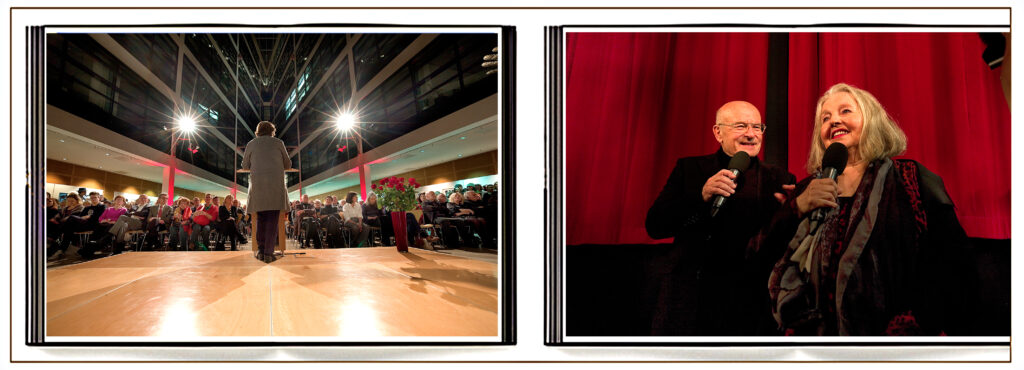
Scene 03. Bundesplatz Cinema. One of the four venues.
In front of and inside the cinema many visitors. Everyone wants to meet Hanna Schygulla, the international star. The door to the projection room is closed, no one is allowed to enter. Inside the cinema, Hanna Schygulla is being made up, interviewed and filmed. After the introduction by film historian Hans Helmut Prinzler – who also wrote the introduction to the two books “Aufbruch ins Jetzt” and “Film Stills” – films by Hanna Schygulla are shown. The afternoon ends with a conversation between Hanna Schygulla and Oscar prize winner Volker Schlöndorff.
The exhibition “Aufbruch und Umbruch” was supported by a tribute to the New German Cinema at the Bundesplatz Kino. Among the guests invited were Michael Verhoeven with his film “Mutters Courage,” Tilo Prückner with “Der Willy-Busch-Report,” costume designer Gisela Storch and set designer Uli Bergfelder. They reported on their collaboration with Werner Herzog and showed Herzogs’ film “Nosferatu”. The other planned screenings with Peter Fleischmann, Joachim von Vietinghoff and Eva Mattes could not take place. Covid puts an abrupt end for long time to all our activities.

Scene 04. After all was shot down. The bicycle and the trip to the movie theatres.
Icy cold. A Siberian wind. All restaurants, cafes and everything else closed. Two bicycles and two Leicas.Starting at the Charlottenburg district, Zoo Palast, then to the Delphi. With a scratchpad, compass, city map and with an idea in mind, Danit sets off. Followed by the photographer, not at all convinced by capturing all cinemas in town, who asks: “Portraying 100 cinemas, crisscrossing all of Berlin, are you sure?” “Only 77!” answers Danit the sculptor. A few hours later, the first pictures are taken and now the photographer has also caught fire.
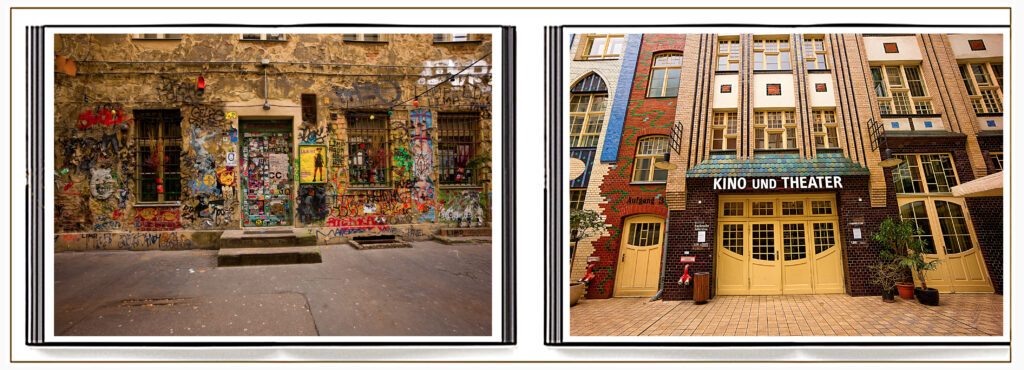
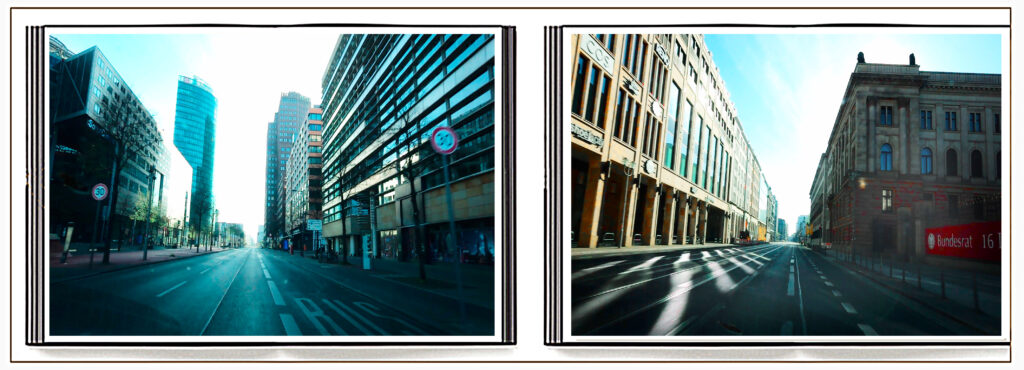
Interlude
On Wednesday, April 8, 2020, a sculpture by Danit has to be transported by car. The city of Berlin deserted, like a ghost town. Where have they all gone, all these people, those who are constantly on the run?
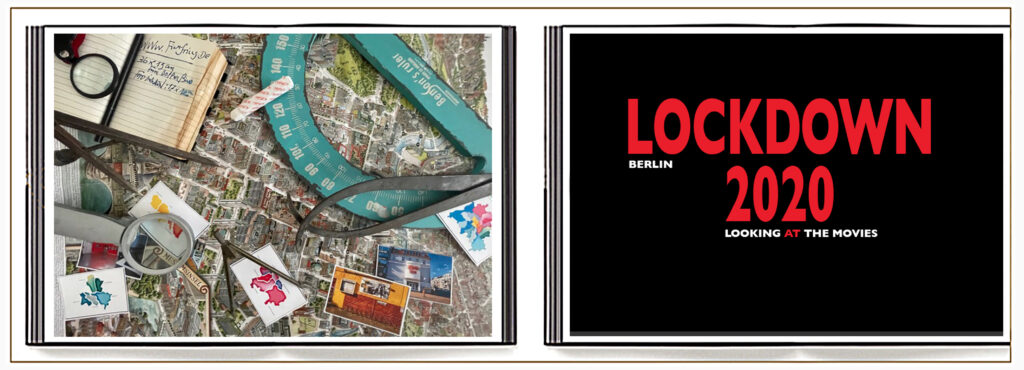
Scene 06: A book idea. The layout and the trip to Leipzig.
On the table: drafts, paper, scissors, rulers, monitors, slide rules, photographs, a repro camera, contact copies of the photographed buildings, notebooks, colored pencils, a large map of Berlin, various detailed maps of the city, several stacks of books about film and vast quantities of popcorn.
From March 26th to April 27th on the road. From freezing winter to spring-like weather. 1000 km have been covered and 4376 photographs taken. Six weeks after the first photo session at the Zoo Palast, a provisional layout has been created and a presentation for computer and beamer has been completed – but no printouts. All stores still closed, including copy shops. The first to see the layout are Swiss ambassador Paul Seger and his wife Colette. They are very enthusiastic and the embassy wants to support the project with an order of 100 copies. A good omen! In mid-May, the borders to the neighboring federal state are open again. The sculptor and the photographer travel to Leipzig to meet with Peter Deisinger the publisher of Zweitausendeins to present the project.
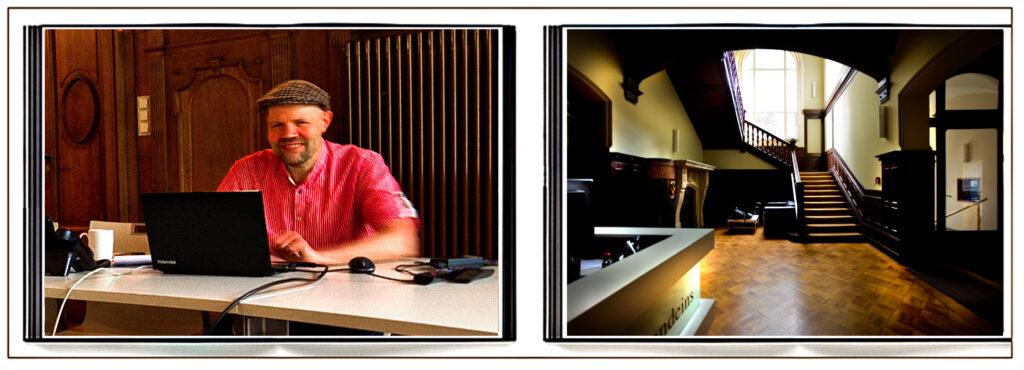
Scene 07: A visit to the publishing house Zweitausendeins in Leipzig.
Every day new warnings, new information and bad news. People are advised not to touch any surfaces, wear a mask, keep distance, disinfect their hands and wash them as often and whenever possible.
Peter Deisinger and Beat Presser know each other; they have already published a successful book on the New German Cinema, “Vor der Klappe ist Chaos”. Now the conversation revolves around the Berlin cinemas in Lockdown and the presentation of the photographs takes place on a large screen. The idea and product appeal to Peter. Now the title of the book has to be found. The book should be small and handy, fit into any pocket, ready to go anywhere. With maps, addresses and information about all the different movie houses. Affordable in price and bilingual. Danit presents her first drafts of the text and is looking forward to her research in libraries where she will be collecting quotes from film history. The book launch is supposed to take place at the Berlinale 2021. Another presentation at the book fair in Leipzig, March 2021. How exciting, what promising perspectives! That day none of us expected that those events would not take place.
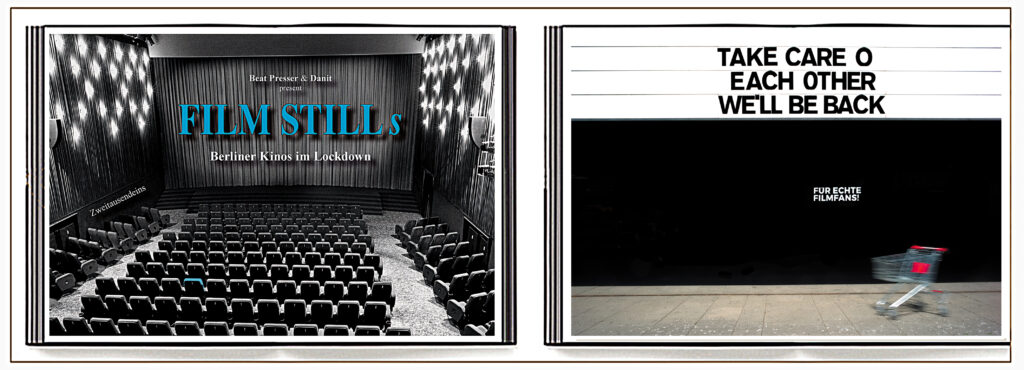
Scene 08. The quotes.
Still a lot to do. Putting photos in the right order. Choose font and font size. Cover and backcover need to be designed, quotes to be found. A foreword and a bibliography! All in German and English. And a map of each district of Berlin with information about the number of screens per cinema and what year they were inaugurated.
“With all these restrictions, it’s not going to be easy,” says the photographer. “It will be fine,” the sculptor replies and makes an initial appointment at the library of the Deutsche Kinemathek. A large stack of books and journals containing articles, quotations, stories lie on the table. Behind Plexiglas, all kinds of precautions and a visitor time limited to half an hour. On leaving the house, packed with books, Danit gets a sudden inspiration!
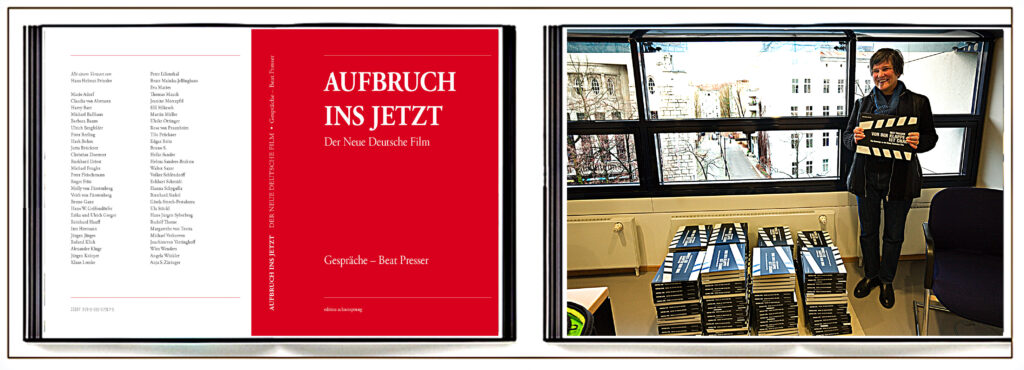
Scene 09. Preface, translation, finishing touch and the book title.
Film Stills has a double meaning and is an appropriate title for the book. Film Stills are stills from film sets, still images of moving film sequences. For us it signifies that Films and Cinema had come to a complete stand still. While sculptor Danit is busy with quotes and books piling up at her place, bookstores and antiquarian bookshops are open again. This allows further research in German and English, on what has been thought and written about cinema for a good hundred years.
In the meantime, the photographer gets in touch with film historian Hans Helmut Prinzler and asks whether he would be willing to write the foreword for the book and Doris Jüngling and John Bradshaw in London for translating the text of the book.
Beat Presser returns to Switzerland and together with book and graphic designer Vera Pechel, they finalize the book, in conjunction with Danit in Berlin and the publisher in Leipzig. The finishing of a book is a delicate matter that requires a lot of graphic skills and sensitivity. Book title, cover, font size, spacing, conversion of the photographs from RGB to CMYK, color matching, articulation of the imprint, consultation with the printer and the publisher, everything must be perfectly coordinated in order to get a proper result.

Scene 10: Flash of inspiration.
What follows is a long winter that drags on, tugs at the nerves and is marked by further health restrictions. Culture seems to have disappeared completely from the scene and freezes in the winter cold, without any perspective. Cinemas, theaters, museums and creative artists are very badly hit. Opening up cultural venues at present is out of the question; worse still, it is not even considered for a long time. As if culture had no more value.
But often a flash of inspiration is born under an extreme situation! The book Film Stills, once on the market, is not enough to draw attention to the importance of culture and also the plight that has arisen for cinemas because of the lockdowns. Danit picks up the phone and speaks to every cinema operator she can, talking about her idea for possible exhibitions in the movie theatres. In order to promote the project she suggests a series of posters for the theatres to put on display. The idea falls on fertile ground. Now only a suitable central exhibition place has to be found.

Scene 11: The poster
It’s snowing, it’s cold, and the posters are in the making.
In spring 2021, the photographer is back from Switzerland. Tested several times and after the obligatory quarantine. Now Beat Presser and Danit are getting started again. All cinemas in Berlin and Potsdam are supplied with posters. Another tour de force. Made possible also thanks to a contribution to the printing costs from the Swiss Embassy in Berlin.
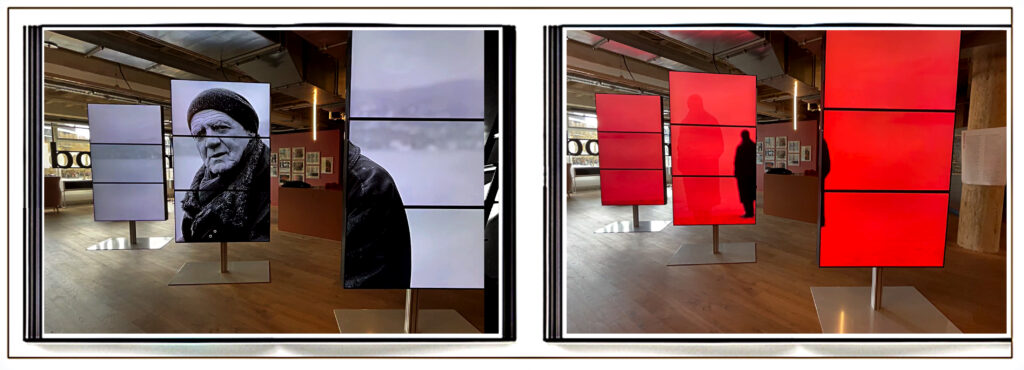
Scene 12. Bikini
Only thing missing was an exhibition venue, showing photography, films, objects, posters etc. etc. in order to illustrate the importance of cinema. Where friends and strangers join into an experience, a place to meet and to drift off together into other worlds for a period of time. Watching a movie in the cinema, in a dark room, on a screen – a fascinating journey again and again.
All of a sudden a door opens! Danit meets with Martin Rebholz from the company brands ‘n mind. His company operates a large exhibition space in the BIKINI BERLIN. Martin Rebholz is enthusiastic about our project. He also proposes to integrate parts of the exhibition “Aufbruch und Umbruch”, the work about the New German Cinema. At the moment the production is in full swing.
The exhibit at BIKINI BERLIN opens on August 20th!
